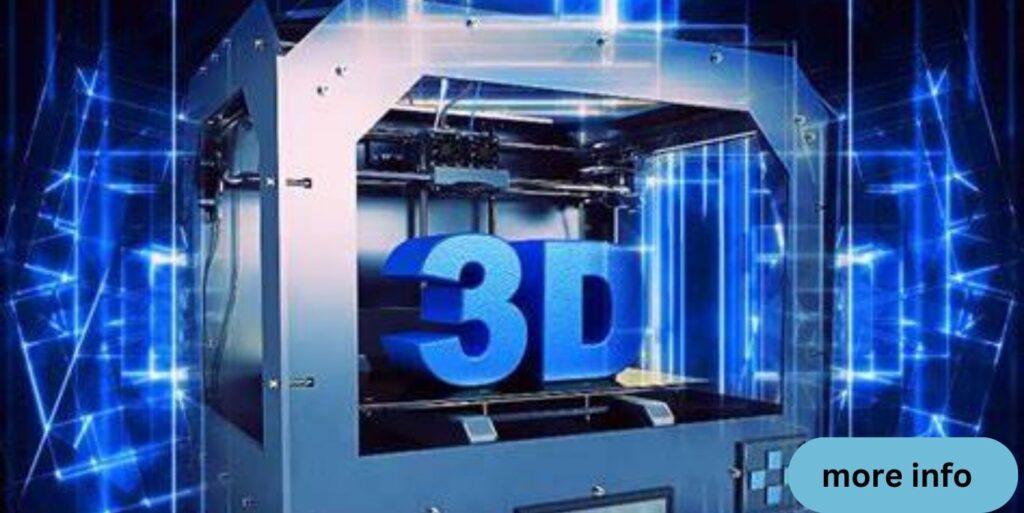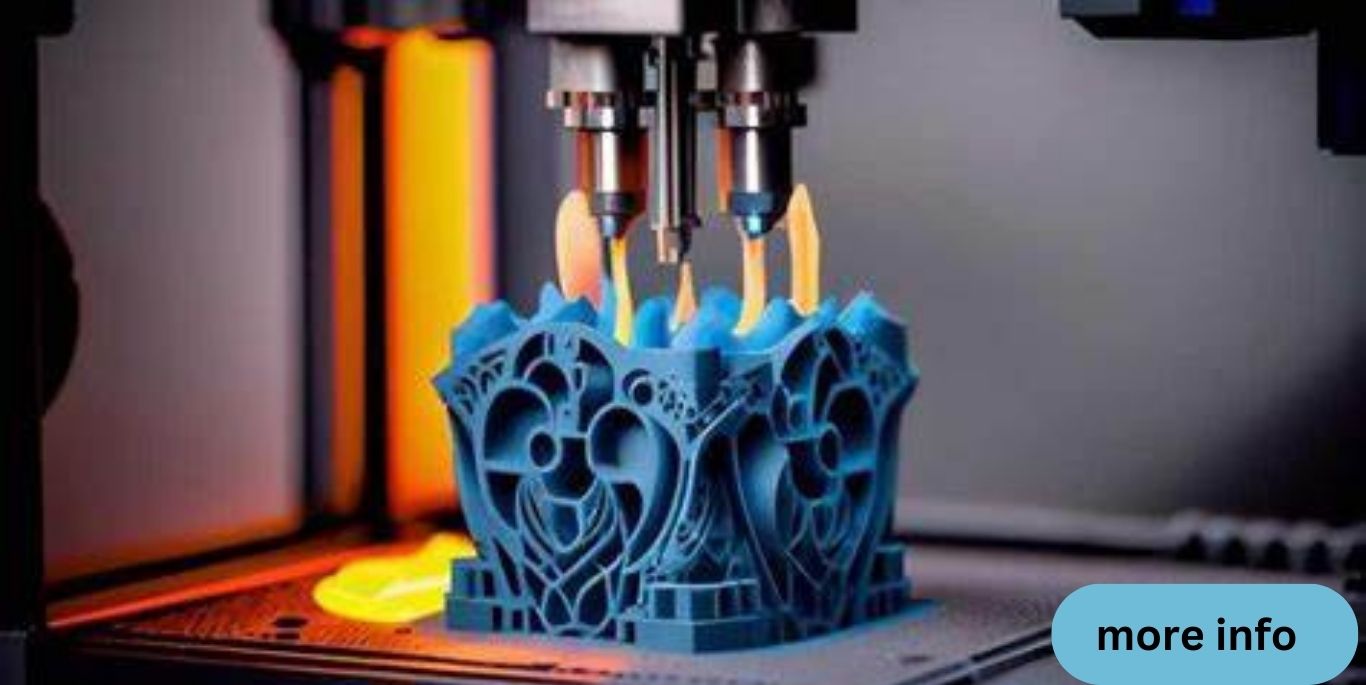Impact of 3D Printing on Manufacturing and Design. The coming of 3D printing, otherwise called added substance fabricating, has proclaimed an unrest in assembling and planning. This innovation, which constructs objects layer by layer from computerized models, offers a degree of adaptability, customization, and productivity beforehand unfathomable in conventional assembling processes. Impact of 3D Printing on Manufacturing and Design. As 3D printing keeps on developing, its effect on assembling and configuration is turning out to be progressively significant, reshaping ventures and setting out new open doors for advancement.
The Ascent of 3D Printing
3D printing had its foundations during the 1980s, yet it was only after the mid-21st century that it started to build up some forward movement. Impact of 3D Printing on Manufacturing and Design. At first, utilized for quick prototyping, 3D printing has ventured into different areas, including aviation, auto, medical care, and purchaser merchandise. The innovation has progressed quickly, with current 3D printers fit for delivering mind-boggling, top-notch parts utilizing various materials, including plastics, metals, earthenware production, and, surprisingly, natural tissues.
Prototyping and Item Advancement
One of the earliest and most huge effects of 3D printing has been in prototyping and item improvement. Customary prototyping techniques can be tedious and costly, frequently requiring specific instruments and shapes. 3D printing smoothes out this interaction by permitting fashioners to make and test different emphases of a model rapidly and cost-really. Impact of 3D Printing on Manufacturing and Design. This quick emphasis cycle speeds up item advancement, empowering organizations to offer new items for sale to the public quickly.
Customization and Personalization
The capacity to create modified items is one more key benefit of 3D printing. Customary assembling strategies are ordinarily outfitted towards large-scale manufacturing, where economies of scale are accomplished by delivering huge amounts of indistinguishable things. Conversely, 3D printing takes into consideration the making of exceptional items custom-fitted to individual details without huge expense increments. This capacity is especially important in businesses like medical care, where custom prosthetics, inserts, and clinical gadgets can be custom-fitted to the extraordinary life structures of every patient.
Changing Assembling
3D printing isn’t simply improving existing assembling processes; it is in a general sense changing them. The innovation offers a few benefits over customary assembling strategies, including decreased squandering, more noteworthy plan opportunities, and the capacity to deliver complex calculations that would be troublesome or difficult to accomplish with traditional procedures.
Diminished Waste and Material Effectiveness
Conventional subtractive assembling processes, like processing and machining, include removing material from a bigger block to make a result. This approach frequently brings about critical material waste. Conversely, 3D printing is an added substance process, building objects layer by layer and involving just the material important for the eventual outcome. This effectiveness diminishes squandering and can prompt tremendous expense reserve funds, especially while utilizing costly materials.
Complex Calculations and Lightweight Designs
3D printing empowers the formation of mind-boggling calculations and interior designs that would be testing or difficult to deliver with customary assembling techniques. This capacity is especially gainful in ventures like aviation and cars, where lessening weight without compromising strength is basic. For instance, 3D-printed parts with cross-section designs can accomplish similar strength and toughness as strong aspects however with essentially less weight. This decrease in weight means further developed eco-friendliness and execution in vehicles and airplane.
On-Request and Decentralized Assembling
The adaptability of 3D printing likewise upholds on-request and decentralized assembling. Rather than keeping up with huge inventories of parts, organizations can deliver things on a case-by-case basis, diminishing capacity costs and limiting the gamble of overproduction. Furthermore, 3D printing considers the creation of parts nearer to the place of purpose, which can diminish lead times and transportation costs. This decentralized way of dealing with assembling can upset conventional stock chains and make stronger and more responsive creation frameworks.
Changing Plan
The effect of 3D printing stretches out past assembling to the domain of plan. The innovation offers architects phenomenal opportunity to investigate new structures and designs, pushing the limits of what is conceivable.

Plan for Added substance Assembling (DfAM)
Plan for Added Substance Assembling (DfAM) is an arising discipline that spotlights on upgrading plans for 3D printing. Not at all like customary plan draws near, which are much of the time compelled by the constraints of subtractive assembling, DfAM makes the most of the extraordinary abilities of added substance fabricating. This incorporates making complex inside calculations, diminishing the number of parts in a get-together, and streamlining structures for weight and strength. By embracing DfAM standards, creators can open new degrees of advancement and proficiency.
Imaginative Articulation and Creative Advancement
3D printing is likewise encouraging new types of inventive articulation and creative advancement. Specialists, planners, and architects are utilizing the innovation to make complex and extraordinary works that would be troublesome or difficult to create manually. From mind-boggling models to custom gems and vanguard design, 3D printing is growing the opportunities for innovative experts. This crossing point of innovation and craftsmanship isn’t just driving advancement but additionally, democratizing configuration, permitting people to rejuvenate their inventive dreams without the requirement for particular assembling ability.
Difficulties and Contemplations
While 3D printing offers various advantages, it likewise presents a few difficulties and contemplations that should be addressed as the innovation keeps on developing.
Material Limits and Expenses
Although the scope of materials accessible for 3D printing is extending, there are still impediments regarding material properties and expenses. Superior execution materials, like specific metals and composites, can be costly, and the mechanical properties of 3D-printed parts may not necessarily in all cases match those of generally produced parts. Continuous innovative work is centered around working on material execution and diminishing expenses, yet these difficulties remain a hindrance to more extensive reception in certain enterprises.
Quality Control and Normalization
Guaranteeing predictable quality and dependability in 3D-printed parts is another basic test. Varieties in printing boundaries, material properties, and natural circumstances can all affect the result. Creating hearty quality control cycles and industry norms is fundamental to guarantee the dependability and execution of 3D-printed parts, especially in security basic applications like aviation and clinical gadgets.
Licensed Innovation and Lawful Issues
The ascent of 3D printing likewise raises significant protected innovation and lawful contemplations. The capacity to handily recreate plans and produce fake items presents difficulties for safeguarding licensed innovation freedoms. Moreover, the decentralized idea of 3D printing can confuse administrative oversight and quality confirmation. Resolving these issues will require coordinated efforts between industry partners, policymakers, and lawful specialists to foster systems that offset development with insurance and responsibility.
Decision: An Extraordinary Innovation
The effect of 3D imprinting on assembling and configuration is significant and expansive. By empowering fast prototyping, customization, and the production of complicated calculations, 3D printing is changing conventional assembling cycles and opening up additional opportunities for plan and advancement. As the innovation keeps on propelling, it will without a doubt assume an undeniably significant part in molding the fate of different ventures.
Notwithstanding the difficulties and contemplations, the advantages of 3D printing are unquestionable. From lessening waste and material expenses to empowering decentralized and on-request creation, 3D printing is driving efficiencies and setting out new open doors for development. Also, the opportunity and adaptability it offers to planners are cultivating exceptional degrees of innovativeness and development.
All in all, 3D printing isn’t simply a device for assembling and planning; an extraordinary innovation is reshaping enterprises and it is feasible to rethink what. As we keep on investigating its true capacity, 3D printing will without a doubt assume a critical part in the following rush of modern and imaginative development, driving advancement and molding the future in manners we are simply starting to envision.

